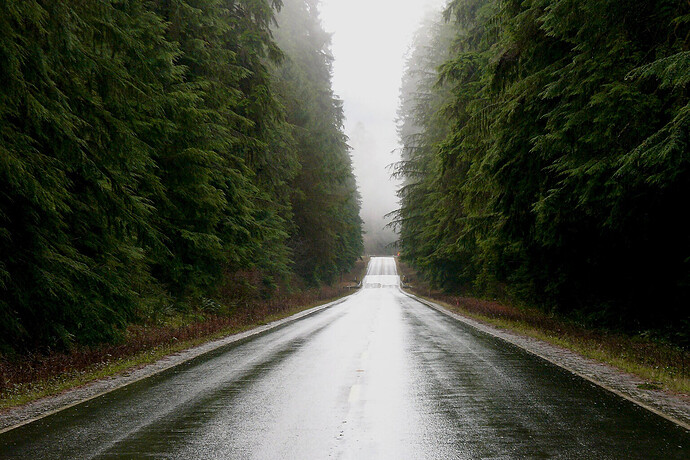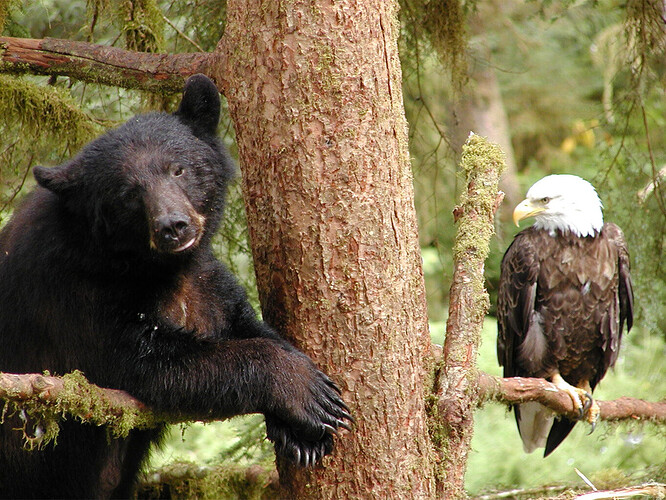- More than 200 forest ecologists and top climate scientists, including Jim Hansen and Michael Mann, have written the Biden administration urging it to quickly move forward on the president’s commitment to protect old-growth and mature forests on federal lands.
- The scientists made an urgent plea for an immediate moratorium on logging federal forests with trees 100 years old or older, many of which remain vulnerable to logging and dozens of timber sales nationally. They also asked for the establishment of substantive federal management standards to protect those forests.
- Federally owned old-growth and mature forests play an outsized role in storing carbon, offering a vital hedge against escalating climate change.
- At stake are 112.8 million acres (45.6 million hectares) of old-growth and mature forest on federal lands, according to a 2023 U.S. Forest Service and Bureau of Land Management inventory — an area larger than California. Less than a quarter of those forests are currently protected against logging.
Two hundred leading U.S. forest ecologists and climate scientists are calling on the Biden Administration to do much more, and much sooner, to protect old-growth and mature forests on federal lands to combat climate change.
Their urging comes after Biden’s announcement in December of the first nationwide amendment in more than a hundred years to change all 128 U.S. Forest Service management plans in order to protect stands of old-growth trees as carbon reservoirs.
The signed letter received at the White House Feb. 24, and also received by the secretaries of agriculture and interior, calls for an immediate moratorium on logging of not only old-growth forests, but also mature forests with trees 100 years old or older on federal lands. Those mature forests are currently managed by the Forest Service and Bureau of Land Management (BLM) for multiple use — including logging, wildfire mitigation, recreation and wildlife and ecosystem protection.
“Because of the global loss of mature and old-growth forests… and their importance in mitigating the climate and biodiversity crisis on federal lands,” the letter states, “we fully support calls by fellow scientists for a moratorium on logging in these critically important forests.”
The letter continues: “We are concerned that the administration’s proposed old-growth amendment does not alter or prescribe any substantive standards for the management of old forests that … remain vulnerable to dozens of timber sales nationally.”
Old-growth forest along a highway on the Olympic peninsula in Washington state. The nation’s mature forests need deeper protections on both federal lands and private lands if the U.S. is to implement wide ranging forest nature-based climate solutions, say researchers. Image by Sam Beebe via Flickr (CC BY 2.0).
Dominick DellaSala, chief scientist with Oregon’s Wild Heritage Project and co-author of the letter, told Mongabay: “The Biden Administration needs to follow through on its global commitments [made in 2021] to end deforestation and forest degradation and to protect at least 30% of the nation’s lands and waters by 2030. Unfortunately, the National Old-Growth Amendment doesn’t go far enough because it leaves out mature forests that are essential in beginning the recovery of greatly depleted old-growth ecosystems on federal lands.”
Among the 200 signees of the letter are three members of the National Academy of Sciences: climate scientists Jim Hansen of Columbia University and Michael Mann of the University of Pennsylvania, as well as biogeochemist William Schlesinger at the Cary Institute of Ecosystems Studies.
At stake are 112.8 million acres (45.6 million hectares) of old-growth and mature forests on federal lands coast to coast, according to a 2023 inventory by the Forest Service and BLM — collectively an area larger than California. According to 2022 research led by DellaSala, less than a quarter of that acreage is now protected from logging.
In an essay published in The Conversation, Bev Law of Oregon State University and Bill Moomaw of Tufts University, both forest ecology experts and Biden-letter signees, argue that forests are essential to what they called [Earth’s operating system](The nine boundaries humanity must respect to keep the planet habitable.
“In the U.S., forests take up 12% of the nation’s greenhouse gas emissions annually and store carbon long term in trees and soils,” they wrote. “Mature and old-growth forests, with larger trees than younger trees, play an outsized role in accumulating carbon and keeping it out of the atmosphere. These forests are especially resistant to wildfires and other natural disturbances as the climate warms.”
A 2023 inventory map generated by researchers showing mature and old-growth forests by region across the U.S. There are 112.8 million acres (45.6 million hectares) of old-growth and mature forests on federal lands — collectively an area larger than California, but less than a quarter is fully protected from logging. Image courtesy of Dominick DellaSala / Wild Heritage.
Historic amendment; no teeth yet
The Biden-letter signees note that the science behind their urgent plea to protect U.S. old-growth and mature forests is strong. But election-year politics — especially in a highly competitive presidential election — tends to mute such recommendations, even though Biden has pushed a far more aggressive climate-mitigation agenda than any predecessor.
The president drew praise from environmentalists in 2021 with an Earth Day 30-by-30 pledge, cited by DellaSala. The president later requested a sweeping old-growth and mature forest inventory of federal lands. The administration’s National Old-Growth Amendment to the Forest Service management plans is likewise historic.
But policies remain in place that appear to favor the forestry industry over conservation.
Two days before the amendment was released on Dec. 20, 2023, to a generally positive response, Christopher French, deputy chief of the National Forest System for the USDA Forest Service, sent a letter to regional foresters. He instructed them that “any project proposing vegetation management activities that will occur where old-growth forest conditions exist” must be submitted to him for review and approval, not decided at local levels.
To Moomaw, who shared that letter with Mongabay, the message is troubling and unacceptable; leaving a loophole for business as usual for the foreseeable future: “It could be two years before the old-growth amendment becomes policy. Meanwhile, logging is being allowed in mature forests and in some old-growth forests. We need this moratorium now because what is happening is irreversible. Logging is destroying carbon sinks while adding to emissions when we can no longer afford it.”
Harvesting California old-growth timber in 1901. Pre-colonial North American forests were a wonder of the world, but centuries of logging greatly diminished mature U.S. forests. President Biden has pledge to preserve what’s left on federal lands, but new regulations offering full protection have yet to be seen. Image by Madera Sugar Pine Company via Wikimedia Commons (Public domain).
Old-growth and mature forests aren’t only important to protecting Earth’s climate; they also conserve biodiversity. Image courtesy of the Forest Service Alaska Region, USDA.
In research published in Nature in April 2023, scientists estimated that global wood harvests “will add 3.5 billion to 4.2 billion tonnes of CO2 to the atmosphere each year between 2010 and 2050.” That estimate is roughly equivalent to the increase in global emissions from annual land-use expansions for agriculture — a leading cause of greenhouse gas emissions.
The U.S. Forest Service, along with the timber industry, continues to argue that wood harvests from mature forests are needed to reduce the risk of wildfires and disease infestations. Moomaw and other researchers reject those arguments as scientifically invalid excuses to continue logging on federal lands during a rapidly escalating climate crisis.
The Biden letter reminds the administration that the U.S. signed the Glasgow Leaders’ Declaration of Forests and Land Use in 2021 along with 140 other countries, pledging to end global deforestation by 2030. Also, as a party to the 2015 Paris Agreement, the U.S. has promised to “conserve and enhance” carbon sinks and reservoirs, which define the nature of mature and old-growth forests.
These issues are being debated in Washington D.C. this week as the Society of American Foresters hosts the Mature and Old-Growth Forests Summit. DellaSala is speaking there on the ecology and management of old forests. Moomaw plans to attend and share the White House letter with attendees. Meanwhile, U.S. old-growth and mature forests hang in the balance.




